This book provides an introduction to what will become the time-consuming task of building a model railway, from deciding what gauge to choose, to taking care of the layout after it has been completed, which once hooked on the hobby, will never happen.
Published in November 2022 as part of Pen & Sword’s “Train Craft” series and written by David Ashwood, the book measures around 21.59 cm x 30.48 cm, and has 112 pages, and 200 colour illustrations. It has a published price of £25, but at the time of writing Pen & Sword has it on offer online for £17.50 and it can be obtained from Amazon for £16.00.
The impetus for this book came from a tragedy in May 2019, when on the eve of Market Deeping Model Railway Club holding its annual railway show it suffered heart-breaking vandalism of all their exhibits. The breaking news story spread worldwide, bringing support from modellers and the general public alike.
The rebuilding of the club’s damaged layouts and building replacements provided the opportunity for experienced modellers to photograph and document the build process. From a distinctly negative situation, the result is this outstanding book which, metaphorically speaking, has risen from the ashes.
With eight chapters this book provides an excellent introduction for anyone wishing to join the likes of Rod Stewart and Jools Holland in building their own model railway. Chapter 1 describes the heartbreak of the vandalism, the worldwide support that followed, and the challenges to resurrecting the layouts. Chapter 2 guides the prospective hobbyist through the decisions that must be made over how the trains are to be controlled and what gauge to use.
Before a layout is built it must be planned, and Chapter 3 introduces various computer programs that help this process, as well as showing different methods of storing a layout and how the size of the layout will go towards making a decision on what gauge to use.
The secret to any successful layout is to construct a sturdy baseboard, which is explained in Chapter 4 with detailed instructions as well as many illustrations showing the building process. Just as important as a decent baseboard is spending time laying track, to make it look and feel right, and the illustrations in Chapter 5 help to dispel some of the mysteries around this part of the layout.
To many people, the wiring of a layout is a complete mystery. However, in Chapter 6 the complexities of the electrics and wiring are shown to be something anyone can tackle. Unless the layout is very basic, some form of controller will be necessary, with the basic principles explained in Chapter 7.
After many hours of toil and trains are successfully running, there is still the need to ensure that they continue. The essential tasks are highlighted in Chapter 8.
The scenes below are the results of vandalism to Market Deeping Model Railway Club’s exhibition that gave the impetus to write this book describing how to build a model railway from scratch.
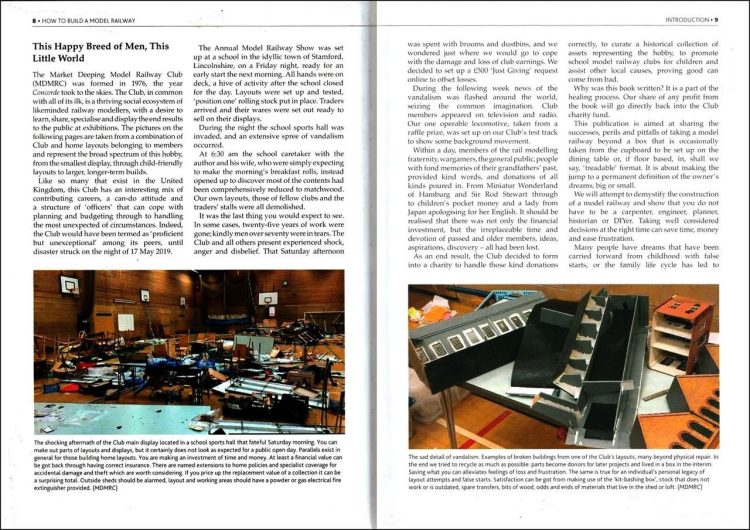
A major consideration in building a new model railway is how much space is available. These pages provide a good comparison of the various gauges available, from “T” or 3 mm gauge right up to “G” gauge which is suitable for garden layouts.
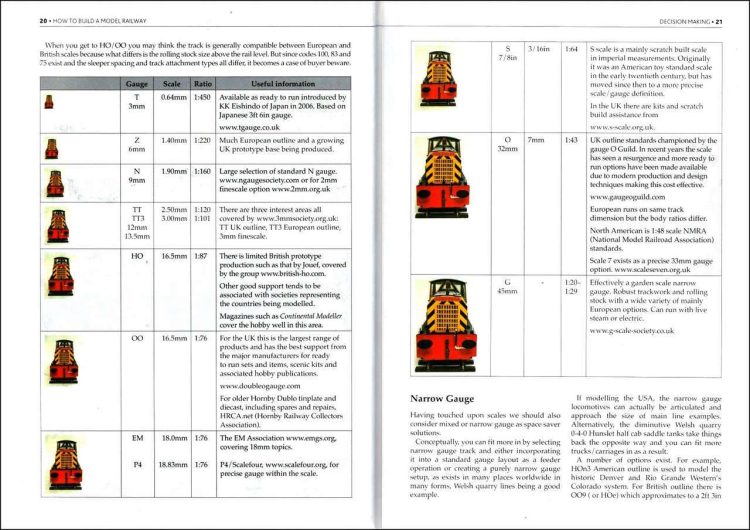
Throughout the book, there are plenty of illustrations showing the various stages in building a model railway. The photos below show some of the essential tasks in the construction of a baseboard.
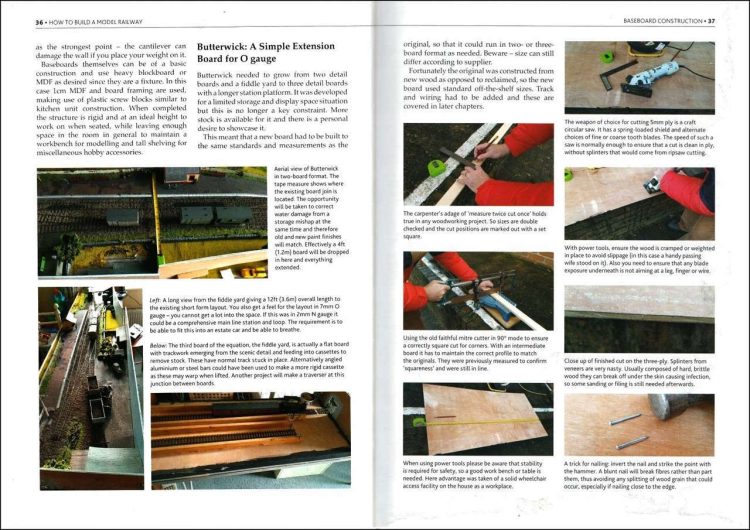
Once a baseboard has been built, then, as on a real-life railway, it’s time to lay the track. Here again, as seen below, many illustrations guide the model maker in the process.
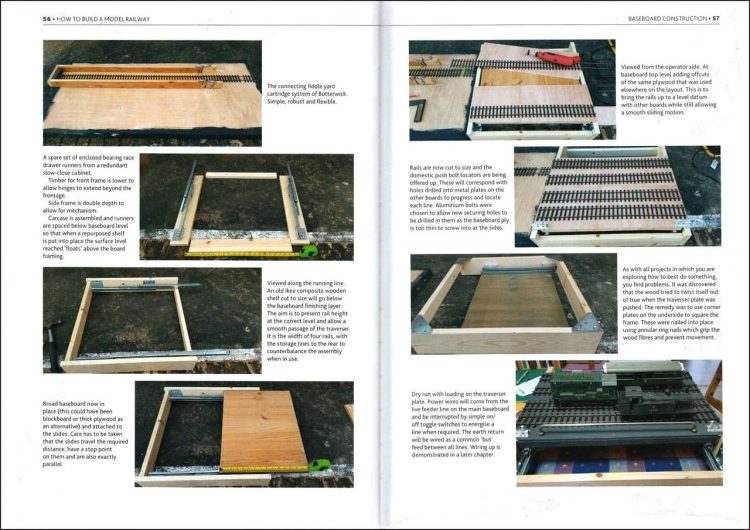
Where appropriate, additional illustrations are used to expand on what for a beginner might be a tricky task.
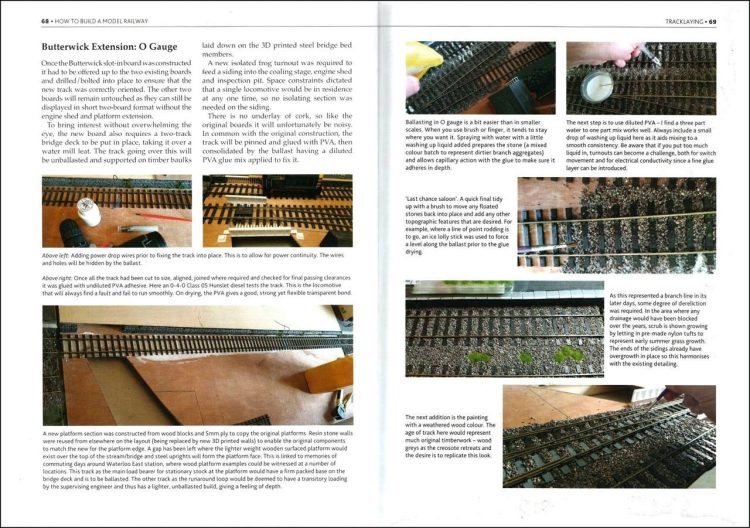
There is no doubt that for many model railway builders, wiring their layout is a dark art. Here the book excels with its detailed photographs that unravel some of the mysteries behind wiring a layout.
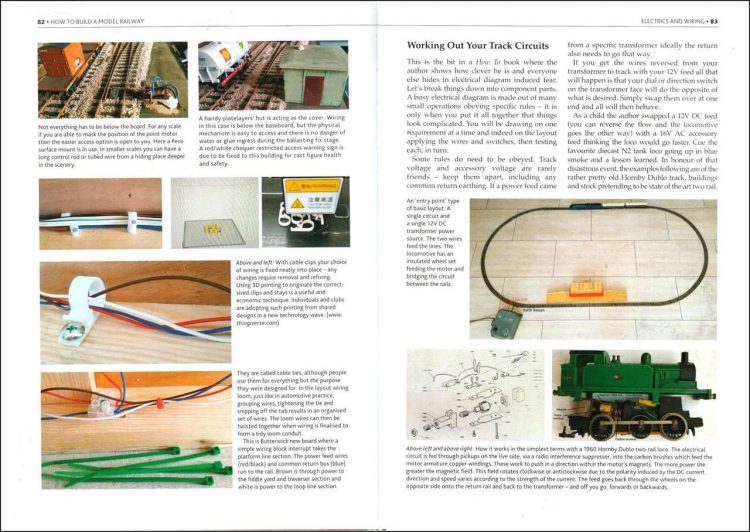
The book’s subtitle of “An Introduction to the Hobby” gives a clear indication of the target that the book is aimed at. The idea for the book came from the horrific vandalism suffered by Market Deeping Model Railway Club in 2019 when the club decided to document the stages in rebuilding their layouts, and many of the illustrations are of the layouts built by the club or its members
For anybody contemplating building their first layout, it is an excellent primer, as it explains how to choose a gauge, perform some woodworking, lay down the track, do some wiring, and maintain everything once it is up and running. Over the years, many books have described how to build model railways, but many assume a certain level of knowledge about the hobby. This book stands out as it answers many basic questions newcomers frequently ask. Using photographs instead of dry descriptions to illustrate different approaches and techniques works well.
Although there is nothing in the book about making scenery, buildings, or the trains themselves, that is understandable as those tasks are quite clearly outside the scope of this book. The book does fall down slightly where it describes using an advanced form of computer control rather than the more-common Digital Command Control (DCC), which a newcomer to the hobby is likely to use. Overall though the book does what it says on the cover, and will help newcomers to the hobby get started with the essentials of baseboards and working track.
A helpful book for someone wishing to enjoy the absorbing hobby of model railways and is highly recommended.
The book is available to purchase from Amazon and from Pen & Sword.
We would like to thank Pen & Sword for providing RailAdvent with a copy of the book for review.

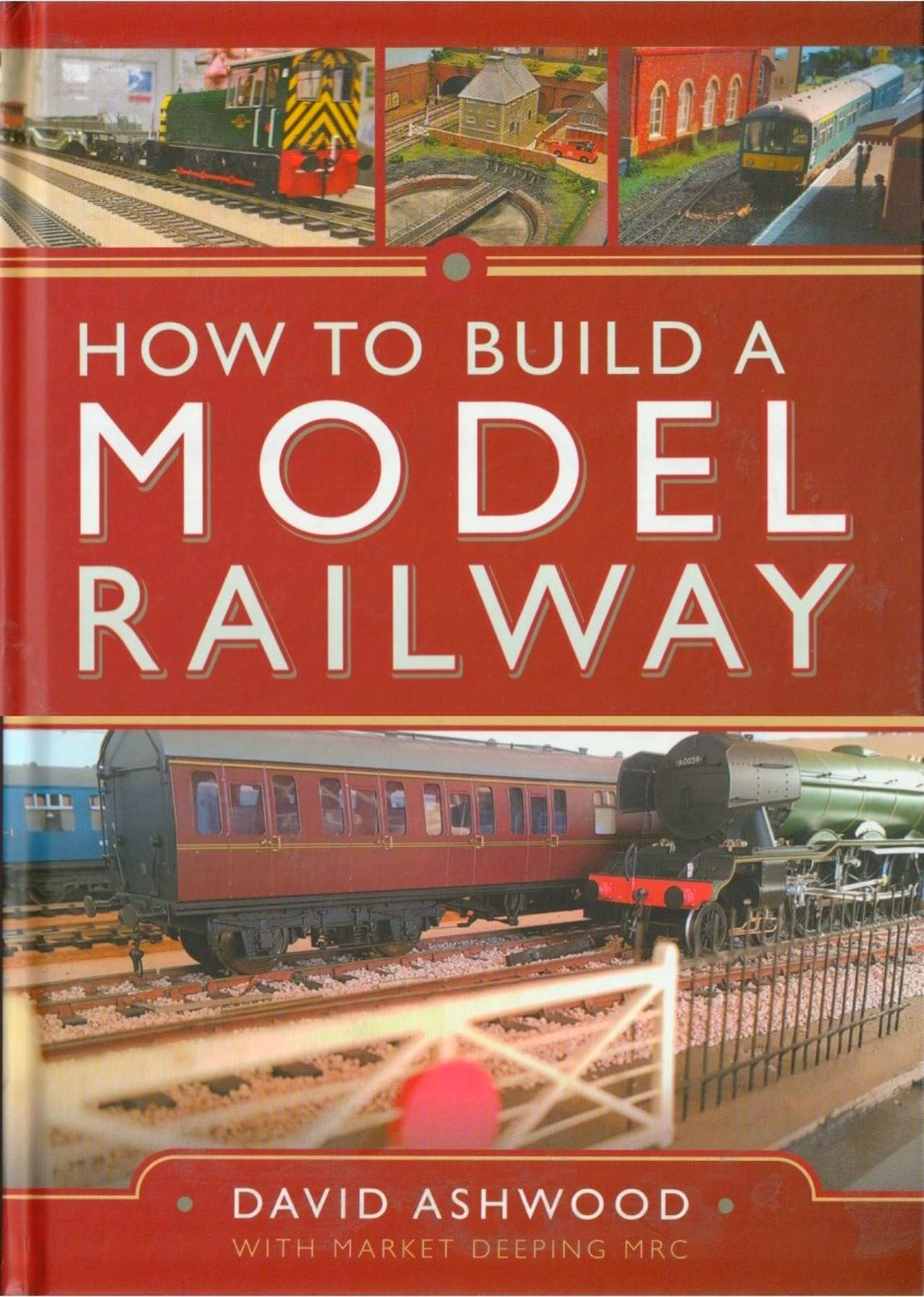



Responses